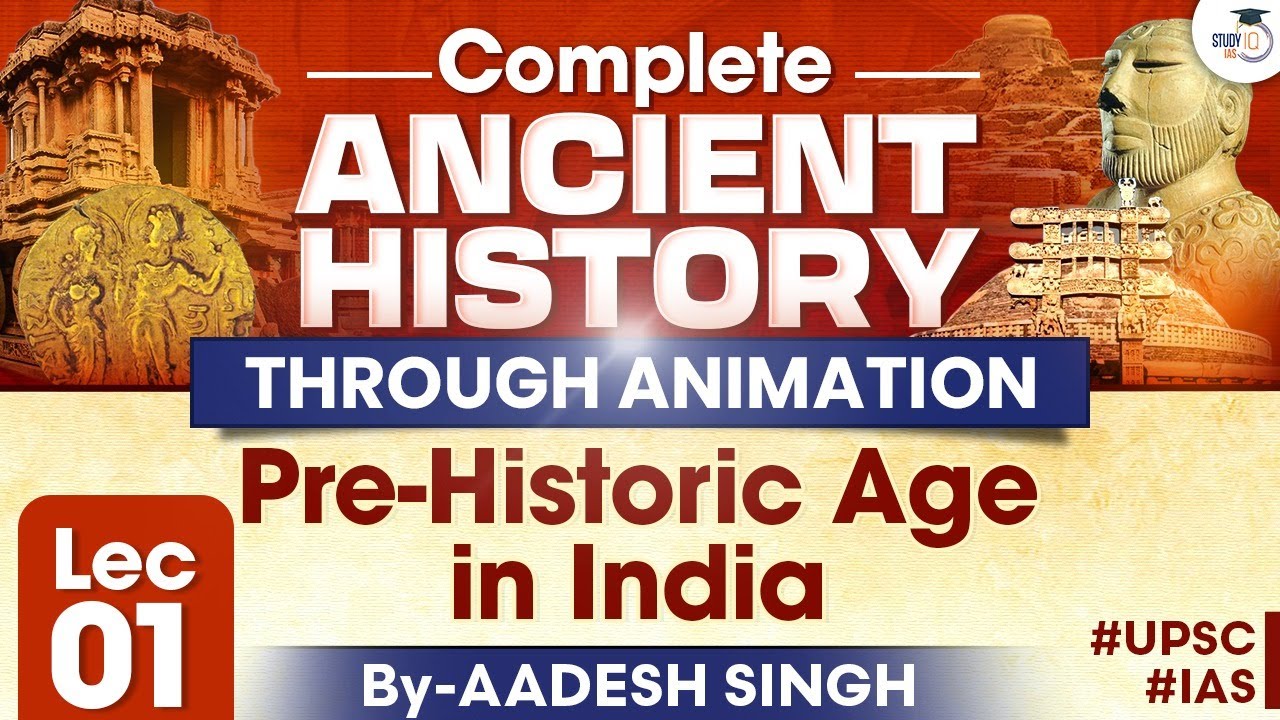Science, Technology and Society - In the World: Ancient, Middle and Modern Ages
Summary
TLDRThis presentation explores the historical evolution of human societies from the prehistoric period to the Iron Age. It delves into the Paleolithic, Mesolithic, and Neolithic Ages, highlighting the development of stone tools, the shift from hunting and gathering to agriculture, and the emergence of permanent settlements. The Neolithic Revolution's impact on food production and societal roles is emphasized, showcasing how advancements in technology and science have addressed human needs and societal concerns over time.
Takeaways
- 🪨 Prehistory refers to the period before written records, divided into the Paleolithic, Mesolithic, and Neolithic eras, all relating to the use of stone tools.
- ⛏️ The Stone Age began about 2.6 million years ago and lasted until roughly 3300 BC, with people using stone tools for hunting and gathering.
- 🔥 During the Paleolithic era, early humans hunted with simple stone tools, lived in caves or huts, and used controlled fire to cook food.
- 🏞️ Nomads in the Paleolithic age moved around in search of food, water, and shelter, migrating from Africa to different parts of the world.
- 🎯 The Mesolithic period saw humans using smaller, more advanced stone tools, often near water bodies, and beginning to settle in permanent villages due to agricultural development.
- 🏡 The Neolithic period marked a significant shift to permanent settlements, agriculture, and the domestication of animals, laying the foundation for future civilizations.
- 👩🌾 The Neolithic Revolution was a pivotal event, moving from food gathering to food production, leading to population growth and the rise of specialized societal roles.
- ⚙️ Inventions like the wheel and the sail during the Neolithic period revolutionized transportation and trade, leading to further economic and societal development.
- 🏹 The differences between the Paleolithic and Neolithic eras include advancements in tools, permanent settlements, and the shift to agriculture in the Neolithic period.
- 🏛️ The Bronze and Iron Ages brought further advancements in technology, government, law, religion, and writing, shaping early civilizations.
Q & A
What does 'prehistory' refer to?
-Prehistory refers to the period before written records, focusing on material evidence left behind by early humans.
What are the three Stone Ages in human prehistory?
-The three Stone Ages are the Paleolithic, Mesolithic, and Neolithic periods.
What does the term 'lithic' mean?
-'Lithic' relates to the use of stone tools in specific cultural periods of human history.
When did the Stone Age begin and what marked its beginning?
-The Stone Age began around 2.6 million years ago, marked by the earliest evidence of stone tool use.
What were the main characteristics of the Paleolithic Age?
-The Paleolithic Age was characterized by hunting and gathering, simple stone and bone tools, controlled fire use, and a nomadic lifestyle.
How did early humans migrate during the Paleolithic period?
-Early humans migrated from Africa to various regions, including India, China, Southeast Asia, and Europe, in search of food, water, and shelter.
What advancements were made during the Mesolithic period?
-During the Mesolithic period, humans developed small polished stone tools, used spears and arrows, and started forming more permanent communities near water sources.
What significant changes occurred during the Neolithic period?
-In the Neolithic period, humans transitioned from a nomadic lifestyle to permanent settlements, developed agriculture, domesticated animals, and advanced in crafts like pottery and weaving.
What was the Neolithic Revolution and its impact on society?
-The Neolithic Revolution was the shift from food gathering to food production, leading to population growth, social roles, and the beginnings of civilization.
How did the invention of the wheel and sail contribute to ancient societies?
-The wheel and sail allowed for greater transportation capabilities, facilitating trade, agricultural expansion, and communication between communities.
What role did weapons and armor play in ancient civilizations?
-Weapons and armor were essential for protection and conflict resolution as societies explored, formed alliances, and interacted with different cultures.
What are some similarities between the Paleolithic and Neolithic periods?
-Both periods saw the development of technology, artistic expression, and early forms of religious belief.
How did economic changes emerge in early civilizations?
-As civilizations developed, they established traditional economies based on agriculture, crafts, and a barter system for trade.
What is 'specialization,' and how did it influence ancient societies?
-Specialization is the development of skills in specific kinds of work, leading to varied social roles and advancing the growth of civilizations.
Outlines

此内容仅限付费用户访问。 请升级后访问。
立即升级Mindmap

此内容仅限付费用户访问。 请升级后访问。
立即升级Keywords

此内容仅限付费用户访问。 请升级后访问。
立即升级Highlights

此内容仅限付费用户访问。 请升级后访问。
立即升级Transcripts

此内容仅限付费用户访问。 请升级后访问。
立即升级浏览更多相关视频

Manusia Prasejarah | Pembagian Zaman Batu dan Logam (Arkeologi & Geologi) | IPS Kelas 8

Complete History Through Animation | Lec 1 | Pre-Historic Age in India | By Aadesh Singh

Idade dos Metais

Evolution Of Metallurgy Through The Ages And Its Impact On Modern Society.

História - Aula 02 - Pré-história

CORAK KEHIDUPAN MASYARAKAT PRAAKSARA (Paleolitikum, Mesolitikum, Neolitikum)
5.0 / 5 (0 votes)
